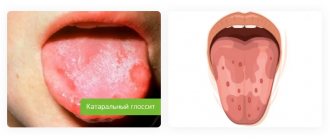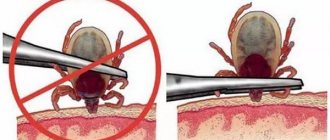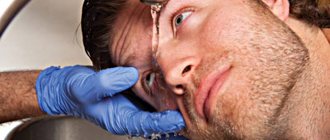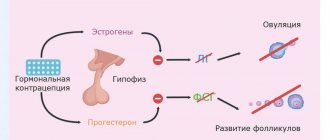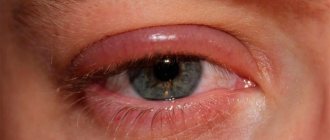General information
Bee stings occur frequently, especially in the warm season.
They are quite painful, and after a bite, redness and swelling appear at the site of the lesion. As a rule, such symptoms soon disappear and the person feels normal. But in some cases, insect bites, particularly bees, can lead to allergic reactions that can be life-threatening. Therefore, it is very important to provide the victim with timely first aid and monitor his condition. And those who are prone to allergic reactions should be given immediate hospitalization. Indeed, sometimes an allergy can develop even after a person is stung by one insect. But multiple bites are especially dangerous. Bee venom, which the insect introduces into the body through its sting, is dangerous for humans. And when attacked by a large number of bees, a general toxic reaction can develop, which is expressed by a significant deterioration in the general condition. Sometimes this condition is deadly. What symptoms can develop from bee stings, and what needs to be done to quickly alleviate the victim’s condition, can be found in this article.
When does a bee attack?
Honey attracts many people. It is hunted by flies, wasps, hornets, as well as bees from other apiaries. Mice and martens love to eat the sweet product. And even a preschooler knows from various fairy tales how the bear loves honey. Naturally, it is impossible to survive in such conditions without effective defensive weapons. Nature has armed these little workers with perfect protection - a sting with poison.
Stinging and destroying, the bee without hesitation rushes into battle, often fatal, with uninvited guests who pose a threat to its family.
Insects, if they are bitten by a bee, die immediately, but the little warrior, which is important, survives. Birds and mice die within 1-2 hours after the attack. Bees also die.
The death of representatives of the bee family when meeting warm-blooded animals is due to the structure of their sting. It is equipped with serrations, like a harpoon. Having pierced the skin of a person or animal, the sting becomes firmly stuck there. The warrior can only fly away by getting rid of her weapon, after which she will inevitably die.
Color. People dressed in dark clothes are attacked by bees many times more often. By the way, this observation is also true for other stinging insects. Therefore, based on thousands of years of experience, beekeepers dress in white clothes, to which these insects react calmly.
Smells. For unknown reasons, bees sting people or animals with a strong odor:
- perfumes (cologne, eau de toilette, perfume);
- tobacco;
- alcohol;
- sweat;
- bee venom
There are numerous cases of horses dying from bee stings when careless owners left them near an apiary or mass collection of nectar. A chain reaction was triggered here. One or more bees stung the animal due to the strong odor of sweat. After the bite, the smell of sweat was mixed with the smell of bee venom, which provoked a massive attack by other representatives of this species. The horse has virtually no chance of surviving the first bite.
Danger to the family. Approaching the apiary, a person begins to pose a potential threat to the inhabitants of the hive. He can destroy their house and take away their honey. In this case, an innate instinct is triggered, aimed at preserving the species. Even at the cost of his life. They attack until the danger disappears.
A bee can also sting if the threat arises for it personally. You should not squeeze this insect with your palms or between your fingers, as it can easily use its weapon. This result is also possible when a bee gets into your hair, if you start to get it out of there out of fear.
There is an opinion among beekeepers that having lost a sting after an attack, a loaded bee will definitely return to the hive to be freed from the bribe. However, such a judgment is not true. Having filled the goiter with nectar, the bee is unable to sting. She simply does not bend her abdomen to attack.
Beekeepers all over the world use this to safely remove frames of honey. By fumigating the hives with smoke, they create the illusion of a fire, to which the inhabitants of the house react adequately. They instantly fill their crops with honey, which will allow them to survive in another place. Naturally, loaded with honey, they cannot sting.
Pathogenesis
Bees have sharp stings that are located on the abdomen - at its rear end. The insect injects poison through its sting, which causes pain, irritation, and sometimes allergic reactions. Unlike other insects, bees leave a sting in the wound. The sting can gradually go deeper on its own and at the same time release poison. That is why it needs to be removed as soon as possible.
Bee venom contains phospholipase A , which produces a hemolyzing effect. red blood cells disintegrate at the site of exposure . Melittin is a linear polypeptide that has toxic effects. Under its influence, edema forms, blood vessels become more permeable, convulsions and coronary disorders develop. Apamin is a powerful neurotoxin that affects the bulbar centers as well as the spinal cord. It may depress breathing. However, if a person is bitten by one insect, then the concentration of the substance is not sufficient to cause pronounced pathological reactions. But with multiple bites, the reaction can be pronounced.
If an allergic reaction develops, it can occur in the form of anaphylactic shock , angioedema, or urticaria .
Classification
Depending on the severity of the process, the condition is divided into several types:
- Mild - only local signs appear, there are no pronounced general symptoms. It is noted after the bite of one or more insects.
- Moderate – characterized by local symptoms, as well as moderate manifestation of general symptoms. Develops as a consequence of the toxic effects of poison. Urticaria may develop , as well as angioedema , which does not affect the airways. Hypersensitivity reactions are possible. The functions of the nervous system are disrupted if a person is bitten by several dozen insects.
- Severe – anaphylactic shock and severe toxic reactions . An allergy to a bee sting can lead to obstruction of the upper respiratory tract. The central nervous system and peripheral nervous system are affected. An allergic reaction most often occurs after a person has been stung by a large number of bees.
Symptoms
The most common symptoms that develop after an insect bite are:
- The appearance of a sharp and burning pain, soon the pain may be replaced by itching.
- Redness of the affected area, while a white dot appears in the center where the sting has penetrated.
- Development of edema.
As a rule, with a single bite, the pain and burning sensation does not last long. Then swelling develops. Redness and swelling disappear after a few days; discomfort may subside a little earlier. The papule persists for about a week. If a bee stings the eye area, the swelling may last longer. blepharitis may also develop . If the poison penetrates the mucous membranes, their pronounced swelling is noted.
If an allergic reaction develops, the following manifestations are added to the main symptoms:
- Very severe swelling in the affected area, which progresses quickly.
- Severe itching and rash all over the body.
- Vomiting, nausea.
- Difficulty breathing - a symptom reminiscent of asthma.
In severe cases, vascular collapse may develop, consciousness is depressed, the functioning of the respiratory center is disrupted, and respiratory activity is weakened.
With urticaria , pink blisters appear on the body, which resemble pimples after being attacked by nettles.
With Quincke's edema, those areas of the body where there is a lot of subcutaneous tissue increase. Damage to the upper respiratory tract area is especially dangerous.
In anaphylactic shock , there is generalized itching of the skin, a sharp drop in blood pressure, chest pain, collapse, and loss of consciousness.
If you are bitten...
In the warm season, the number of victims of animal and insect bites, burns caused by plants and some animals increases. Moreover, not somewhere in the distant Amazon, but here in St. Petersburg and the Leningrad region and in traditional vacation spots - in Crimea, Bulgaria, and the Mediterranean.
Snakes
The common viper is widespread in Russia, as well as in Northern and Central Europe and Northern Asia. The poison causes pain, swelling at the site of the bite, a rise in temperature, heart function may sharply deteriorate, and in severe cases, loss of consciousness is possible. Cases of death from a viper bite are quite rare. However, allergy sufferers may have a very severe reaction. Therefore, the first thing to do is take an antihistamine and go to the doctor. You need to remain calm, drink more fluids (but not alcohol). Sometimes it is recommended to suck out the poison if there are no damaged teeth or abrasions in the mouth.
The steppe viper lives in the Crimea, the Caucasus, Europe, Kazakhstan and China. Its bites are less poisonous than those of the common viper. There are no known cases of death from steppe viper bites. But the bites of large species of vipers are dangerous to humans. For example, the bite of a viper, which injects about 50 mg of poison. This snake lives in Transcaucasia, Turkmenistan, Uzbekistan, Kazakhstan, northern Africa, the countries of the Eastern Mediterranean, etc.
Bees, wasps, bumblebees
The bite causes short-term pain and burning, followed by redness and swelling. In most cases, the pain and itching goes away within one to two days. It is dangerous if a person is stung by tens or hundreds of bees at the same time (the lethal dose is 100-500 stings). If an insect bite occurs on the inside of the mouth or throat, or in the eyeball, in these cases you should immediately consult a doctor. There are people with increased sensitivity to Hymenoptera bites. They can have a severe reaction even if they are stung by one or two insects.
For a country walk, it is better to wear clothes made of light fabric that cover your neck, arms and legs as much as possible. Bright and dark colors attract insects more. If a wasp or bee is flying near you, do not make sudden, fussy movements.
If you are stung by a bee, you need to carefully remove the sting. It is not recommended to squeeze out the sting with your fingers, as this may spread the poison. Place a cotton swab moistened with a weak solution of potassium permanganate or water and soda on the bite site. You can apply ice. Allergy sufferers should always have with them antihistamines recommended by their doctor.
Scolopendra
The ringed scolopendra is found in large quantities in the Crimea, the Mediterranean and Transcaucasia. The bite is dangerous to humans, but not fatal.
Scolopendras often crawl into tents and houses. You can step on it on the beach or accidentally touch it with your hand while assembling a tent or turning over a stone.
The sting of a scolopendra is quite difficult for many people. The bite site swells greatly, and the swelling gradually spreads to a large area of the body. The temperature often rises to 38-39°, chills and aches often occur. Symptoms usually disappear within 24-48 hours. However, in any case, victims should urgently consult a doctor. Bites are especially difficult for children, allergy sufferers, or people suffering from heart disease.
Australia and South America are home to larger species of scolopendra that are purple, red, and yellow in color. In total, about 600 species of scolopendra are known.
Scorpions and spiders
Scorpion venom has a toxic effect on the central nervous and cardiovascular systems. The most dangerous in the territory of the former USSR is the karakurt (“black widow”). Karakurt is found in the desert and steppe zones of Central Asia, Crimea, the Caucasus, southern Europe and northern Africa. The bites of the female can be fatal to humans and animals such as a camel or horse - the karakurt venom is 15 times stronger than the venom of a rattlesnake. The spider does not attack a person unless he is disturbed.
After a karakurt bite, a small red spot appears on the skin, which quickly fades. After 10-15 minutes, acute pain occurs in the abdomen, lower back, chest, severe anxiety, agitation, and fear of death. The victim's legs go numb, breathing becomes difficult, vomiting and headache appear. The face takes on a bluish tint. The heart rate drops, the pulse is arrhythmic. It is necessary to administer anti-karakurt serum, so the patient must be taken to a medical facility.
Dogs, cats, foxes, rats
Animal bites can cause infection with rabies and tetanus. Rabies is an infectious disease of the nervous system with a 100% fatal outcome. The victim is prescribed a course of vaccination against rabies. If the dog can be monitored, then after a 10-day period, in the absence of rabies in the dog, vaccinations can be stopped; in all other cases, vaccinations are continued until the course is completed.
Tetanus is another dangerous disease transmitted by animals. It is recommended to get a tetanus shot every 10 years. If more than five years have passed since the last vaccination, and the wound is deep and dangerous, it is necessary to re-vaccinate within 48 hours from the moment of the bite. Less dangerous, but much more common complications of animal bites are wound infection and the development of an abscess.
Avoid contact with unknown animals. Even animals that seem friendly can bite. Do not feed or try to catch or play with wild animals - squirrels, raccoons, rats. Do not disturb the animal while it is eating or feeding its offspring. And don't stick your fingers into the cages at the zoo.
Sea urchins and jellyfish
Many people suffer from sea urchin stings. They are found at the bottom off the coast of Turkey, Cyprus, Montenegro, etc. The injections are very painful and take a long time to heal. Small fragments of sea urchin spines very often remain in the wound. Removing them is not always easy - they are very fragile. It is better not to swim where there are hedgehogs, or to go into the water in rubber slippers. If the injection could not be avoided, you will have to consult a doctor.
You shouldn't joke with jellyfish either. When you touch a jellyfish, a burn occurs, sometimes quite severe. You should wash the damaged area with salt water, not fresh water, which can worsen the burn. Apply ice well. Allergy sufferers may experience a severe reaction, and in such cases they should urgently consult a doctor, and before that take an antihistamine. There are known cases of anaphylactic reactions to the burn of ordinary jellyfish, which ended tragically.
In the Black Sea, aurelia and corneros are the most common species; they are not very dangerous. More aggressive jellyfish live in the Mediterranean - cyanea ("hairy jellyfish"), pelagia ("small lilac sting"), chrysaora ("sea nettle"), etc. Their burns are stronger than those of the Black Sea, and allergic reactions are more common. The most dangerous jellyfish are in Australian waters.
Dangerous plants
Some plants can cause severe burns that take a long time to heal.
Ash tree, or burning bush, is a plant with very beautiful flowers. They smell them, bring them to the face, pick them off... At the moment of touching, a person does not feel anything, but after 10-12 hours the skin at the site of contact turns red, becomes blistered and burns form (up to the second degree). Skin lesions over a large surface are life-threatening. Grows in Europe, Turkey. It can be found in Crimea and the Caucasus.
Hogweed is distributed throughout the European part of Russia and in Estonia. A short period of sun exposure to an area of skin stained with plant juice is enough to cause a second-degree burn. They are treated in the same way as regular burns. You need to remember what these plants look like and not touch them or inhale their aroma.
Bloodsucker healer and other useful creatures
It turns out that some bites and venoms not only cause pain, but also bring benefits.
Doctors actively use leeches, bees and snakes to treat many diseases. Bee venom is used to treat pain of various origins, chronic bronchitis and bronchial asthma, the consequences of stroke, etc. Medicinal preparations that have an analgesic and anti-inflammatory effect are made from snake venom.
Hirudotherapy – treatment with leeches – is also widely used in medicine. 82 different substances were found in the saliva of leeches. An insignificant amount of this “medicine” enters the patient’s blood and does its good work there. Leeches help in the treatment of arthrosis and arthritis, gastric and duodenal ulcers, myopathy, neurodermatitis, and bronchial asthma.
Treatment with leeches also has contraindications: hemophilia, congenital incoagulability, severe anemia, hemorrhagic diathesis, pregnancy. In addition, leeches are not recommended for people with persistently low blood pressure, as well as those who have an individual intolerance to any component contained in the secretion of the salivary glands of these beneficial annelids.
The “bite” itself is no more painful than a mosquito: by piercing the skin, the leech injects a special substance, which relieves swelling and pain. The famous surgeon Nikolai Pirogov, even during the Russian-Turkish War, applied a hundred or more leeches to extensive lacerations. And this saved hundreds of wounded people from painful shock and infections!
There are about 400 types of leeches on the globe, but only medical and pharmaceutical ones can work wonders. The first information about their healing properties dates back to Ancient Egypt. These are wall paintings that were discovered in the tomb of the pharaohs of the 18th dynasty (1567–1308 BC). They say that the secret of Nefertiti’s extraordinary beauty is that she added... dried leeches to her cosmetic potions.
Our clinic is often visited by patients who have received wounds or damage from animal or insect bites - dogs, cats, bees, ticks and even foxes, iguanas, parrots and jellyfish...
Often there are difficult cases, the wounds from bites are lacerated, extensive, multiple, and often infected. Jellyfish burns take a long time to heal. Animals and insects can be carriers of various dangerous infections. Allergy sufferers, asthmatics, children, and the elderly especially suffer from insect venom from bites. They need to be especially careful and protect themselves, and if the bite cannot be avoided, then immediately consult a doctor. When going even for a short walk in the forest, you need to carefully cover your body in any weather, even hot. You need to use products that repel insects and ticks - now there is a large selection in pharmacies and stores. Be careful when interacting with pets and especially with wild animals. Be sure to have at home and take with you outside the city and to the resort a small first aid kit in which to put a bandage, iodine, a plaster, a small bottle of hydrogen peroxide, and soda powder. You need to dilute soda with water and apply a bandage to the bite - this is one of the simple and effective first aid methods. People with allergies must have with them antihistamines recommended by their doctor.
To prevent tick-borne encephalitis, you need to take a course of vaccination. If you are planning to travel to epidemiological areas, you also need to get the necessary vaccinations in advance. All vaccinations, except for rabies vaccination, can be done in our clinic. Rabies vaccination in St. Petersburg is given only at the City Anti-Rabies Center on Kavalergardskaya Street, 26.
Tests and diagnostics
Bee sting photo
It is usually possible to determine that a person has been bitten by a bee visually. But if we are talking about severe allergic reactions, then you have to call emergency help, whose doctors will examine you and make a preliminary diagnosis.
If necessary, if a person develops severe reactions, additional examinations are carried out.
- Physical blood pressure are measured . The doctor examines the skin to determine whether there are signs of allergies . Listening to the lungs may be performed.
- Laboratory - a general blood test is performed to determine signs of the inflammatory process
- Hardware - its use is advisable only in the development of pronounced systemic manifestations. Ultrasound, radiography, and ECG are used.
Treatment with folk remedies
Those who are looking for an answer to the question of what to do if they are bitten by a bumblebee at home can be advised to use some folk remedies. But this can only be done if the bite of a bumblebee or bee does not cause serious systemic reactions.
If your arm or leg is swollen after a hornet or bee sting, you can remove the swelling using the following methods:
- Honey - it should be applied to the bite site after the sting is removed. Honey activates healing processes.
- Coconut oil – this should be applied to the bandage and secured to the affected area. The oil reduces the severity of swelling and reduces the inflammatory process.
- Lavender oil – the area should be treated with essential oil, which relieves signs of inflammation.
- Baking Soda – Mix baking soda with water to form a thick paste. This product should be applied to the affected area and secured with a bandage. It effectively reduces swelling and itching.
- Parsley or dandelion juice is an effective remedy if there are no medications at hand. Fresh juice should be squeezed onto the wound.
- Vegetable oil - to reduce the severity of irritation, lubricate the bite with olive or sunflower oil.
First aid
If a person is bitten by an insect, you need to follow the following algorithm:
- Find the sting and carefully remove it using tweezers. The sting should not be squeezed out, as such actions lead to the spread of poison.
- Disinfect the bite site using any antiseptic or saline solution (1 teaspoon of salt per glass of water).
- Apply cold - ice, a towel soaked in cold water or a cold heating pad.
- Treat the bite site with ointment.
- Take any antihistamine.
- To drink a lot of water.
If a person experiences a severe allergic reaction, it is important to call an ambulance immediately. The victim should be laid down, covered, and covered with warm heating pads. It is necessary to immediately give him an antihistamine.
If the heart has stopped and there is no breathing, cardiopulmonary resuscitation is performed: cardiac massage, artificial respiration.
How to relieve swelling from a bee sting on the second day
If the swelling has not been treated for more than a day, then it will be a little more difficult to quickly get rid of it. Here you will have to use antiallergic drugs in the form of ointments and tablets. Traditional recipes - baths, lotions and the like will also not hurt, but you need to make sure that they do not cause more harm.
Drug treatment
Medicines can be prescribed both local and systemic. They are prescribed based on the presence of a generalized allergic reaction. Doctors prescribe the following types of medications:
- Glucocorticoids.
- Antihistamine tablets.
- Parenteral glucocorticoids.
Prevention
To prevent such lesions and avoid serious consequences, you must follow these recommendations:
- Determine whether there is a risk of developing allergic reactions. If this tendency is confirmed, it is important to have antihistamines on hand.
- Do not walk barefoot, do not go deep into the bushes.
- Carefully inspect picnic areas before pitching a tent or eating area.
- Use protective nets on windows.
- Wear protective clothing if necessary.
- It should be noted that bees sting if they feel threatened. Therefore, you should not make sudden movements near the hive or a place where there are a lot of insects. They are also irritated by strong odors, in particular perfumes and smoke.
How to avoid bee attacks
Any outing into nature is fraught with the danger of encountering insects.
If you have any chance of attracting bees, follow these guidelines:
- Don't wear clothes that are too bright . These colors will attract insects.
- When in insect habitats, do not consume food or drinks high in sugar . Bees and wasps will definitely flock to the sweets. If you start to drive them away, you will certainly get a bite.
- If a bee is interested in you, do not start waving your arms to drive it away . Insects perceive sudden movements as a sign of aggression and begin to defend themselves. If a bee lands on any part of the body, brush it away with a snap of your finger.
- Try to wear clothes that fit tightly to your body when walking . If a bee gets under the fabric blowing in the wind, it will not be possible to drive it out without a sting.
- Don't walk on the grass barefoot.
Diet
Hypoallergenic diet
- Efficacy: therapeutic effect after 21-40 days
- Timing: constantly
- Cost of products: 1300-1400 rubles. in Week
If a person is stung by an insect, he should be sure to consume a sufficient amount of fluid. You need to drink clean water, as well as weak tea, fruit drinks, and compotes.
Nutrition should be healthy and nutritious. If a person has a tendency to allergies, foods that provoke allergic reactions should be excluded from the menu.
Consequences and complications
The most common complications are respiratory failure as a consequence of angioedema . In the absence of medical care, a person may die.
Anaphylactic shock is also a serious complication, with a mortality rate of about 50% (without treatment).
After multiple bites, multiple organ failure may develop, which later results in intratubular necrosis .
But in most cases, the consequences of a bee sting, like the consequences of a bumblebee sting, are not serious, and all manifestations disappear after a few days.
Bee sting: benefit or harm
Since bee venom has medicinal properties, apitherapy , that is, treatment with bee stings, is practiced. The benefit of this method is associated with a number of components contained in the poison. These are phosphoric and hydrochloric acid, proteins, fats, etc.
However, the harm associated with the risk of allergic reactions should be taken into account. Bee venom contains histamine, which provokes allergic reactions. Another component of melitin is a toxin that destroys red blood cells. The substance phospholipase destroys cell membranes and walls, and apamin provokes stimulation of the nervous system.
However, the complex of the listed components also produces a therapeutic effect. With the help of apitherapy, you can reduce the severity of inflammation, stimulate the immune system , improve blood microcirculation, etc. But in no case should such treatment be practiced without the assistance of an experienced specialist.
Bee venom
Bee venom is a clear, slightly yellowish liquid that is produced by the glands of the honey bee. The poison consists of various substances that can be grouped into three main groups: enzymes, toxic polypeptides, biogenic amines. Quite complex concepts for people who do not have a medical or biochemical education. For ease of understanding, we will list only the main substances from these groups, and also indicate the main allergens and causative factors of acute allergic reactions.
Among the enzymes it is worth noting:
- Hyaluronidase.
- Phospholipase A2.
- Phosphatase.
Among toxic polypeptides, special attention is paid to:
- Melitin . This substance is the basis of the poison. Makes up about half of all poison.
- Apamin.
- MCD peptide.
- Sekapin.
- Tertiapine.
Main biogenic amines:
- Histamine.
- Dopamine.
- Norepinephrine.
There are other poisonous substances, but the main ones are the ones listed above. Thus, the main pathological factor in bee venom is melitin.
The main pathological factor in bee venom is melitin.
